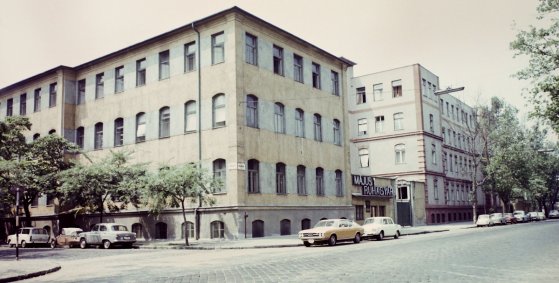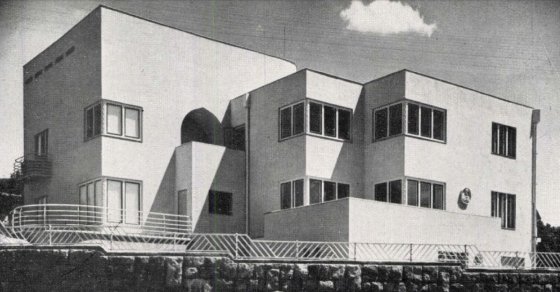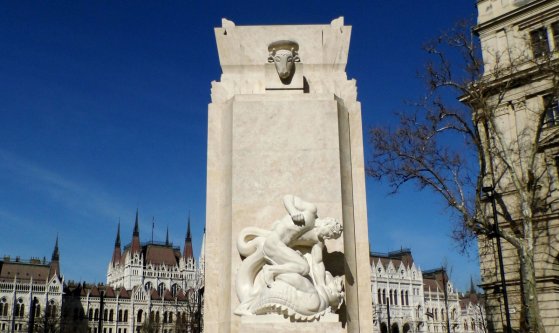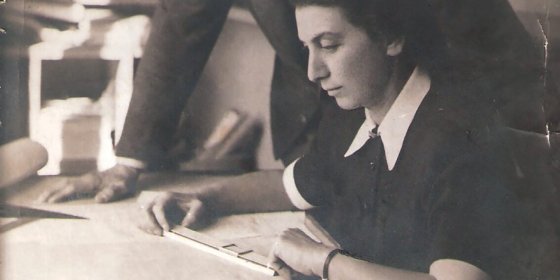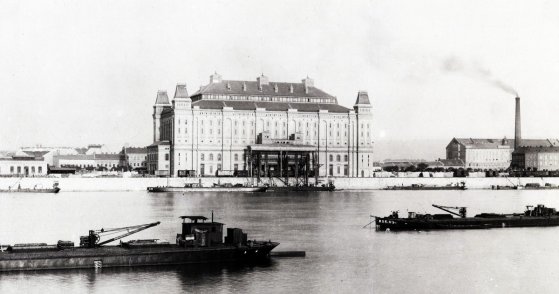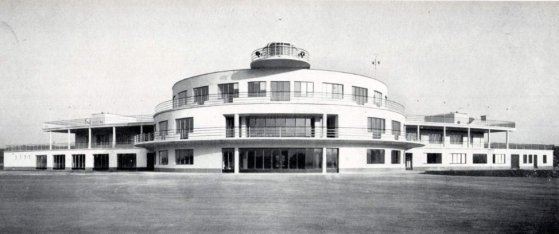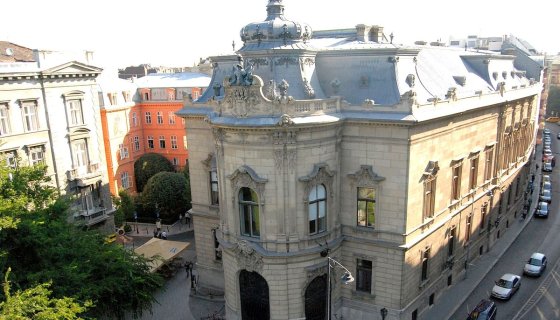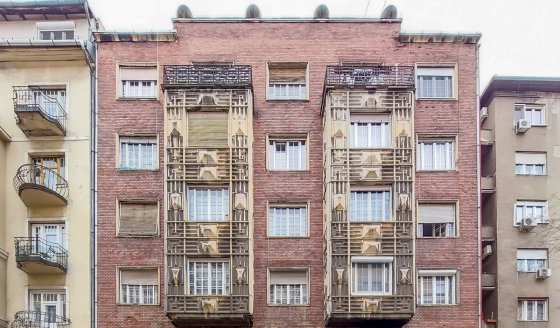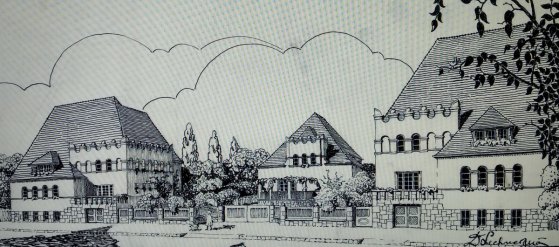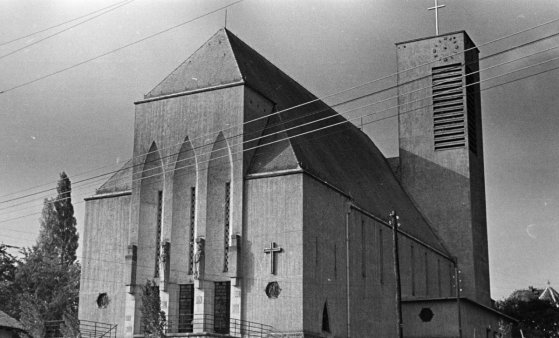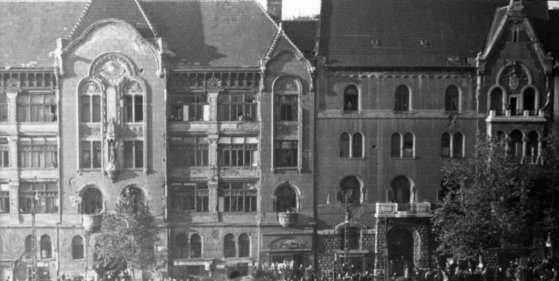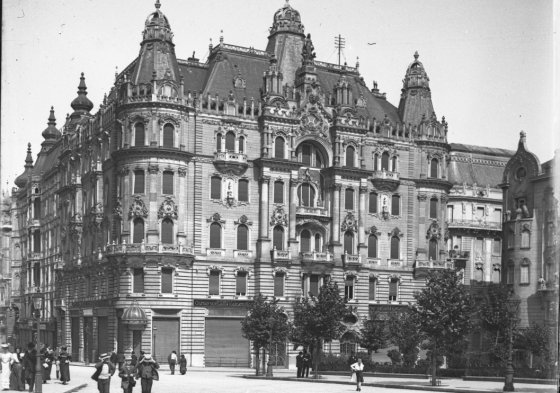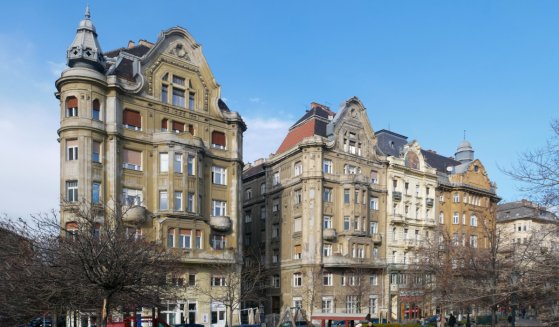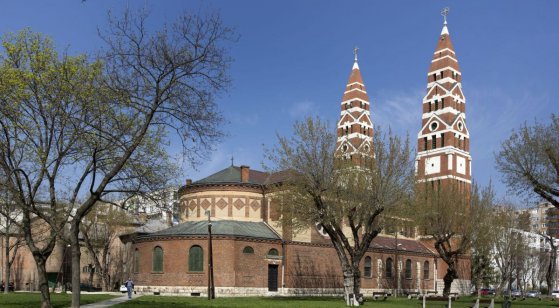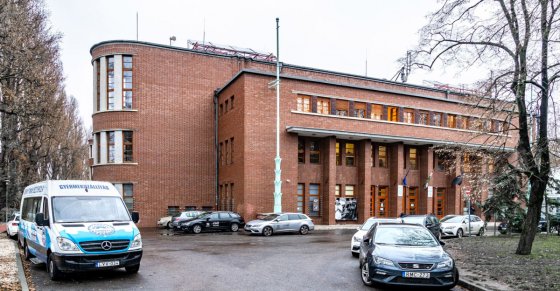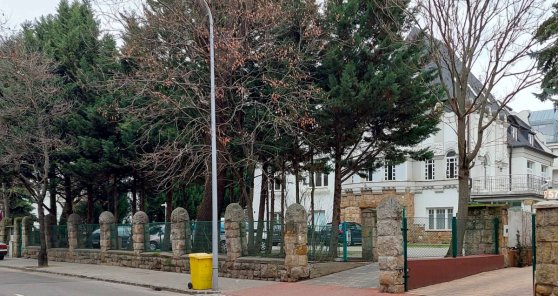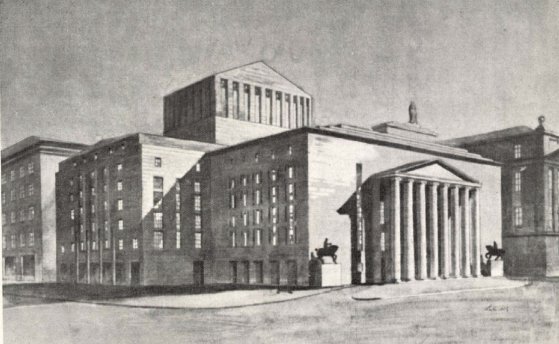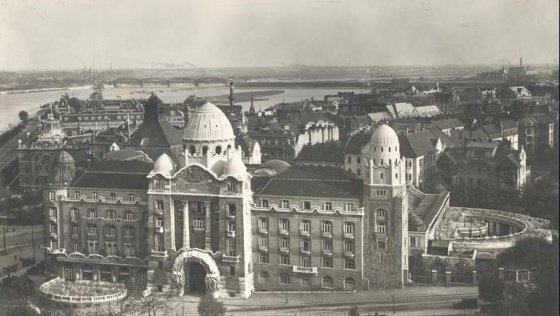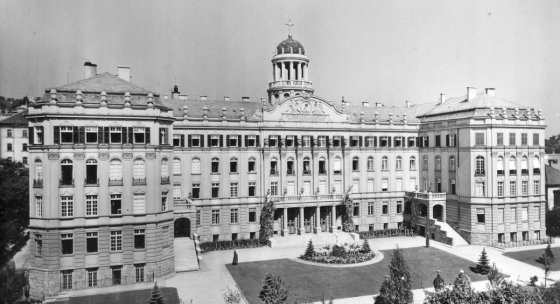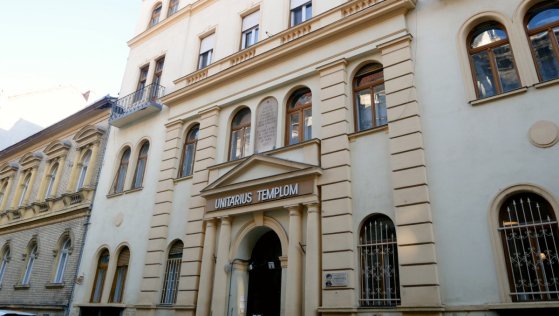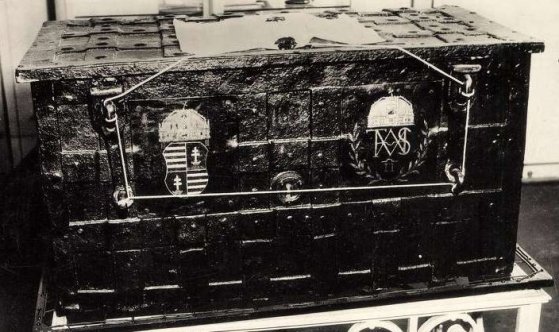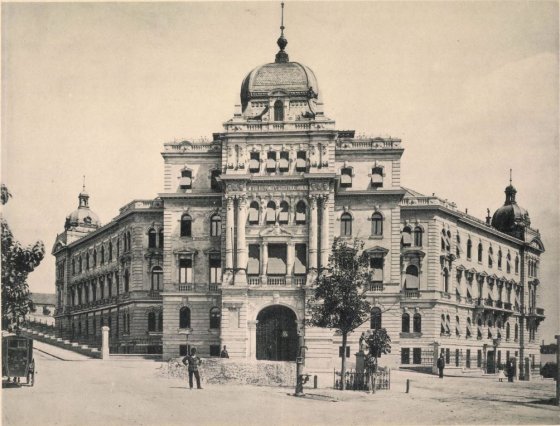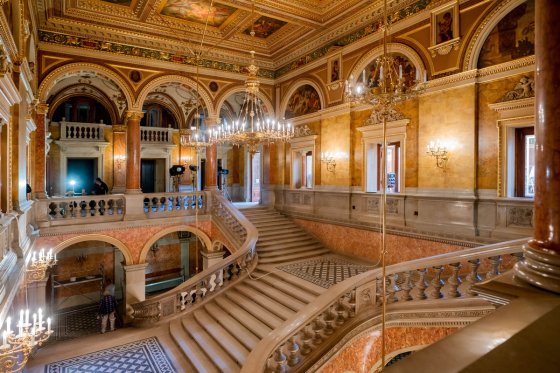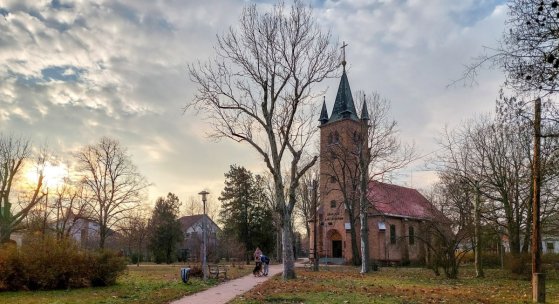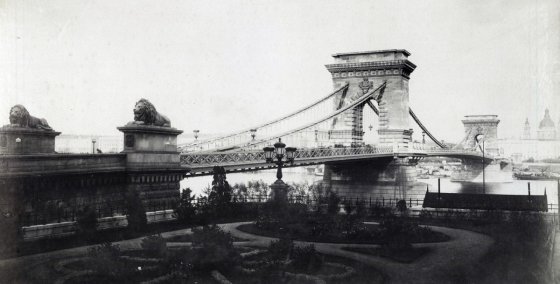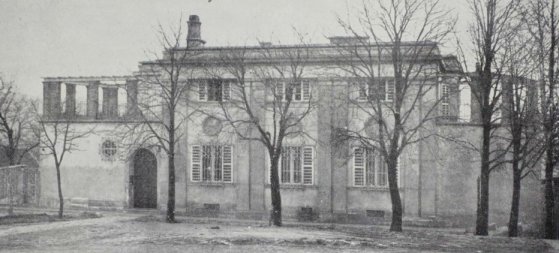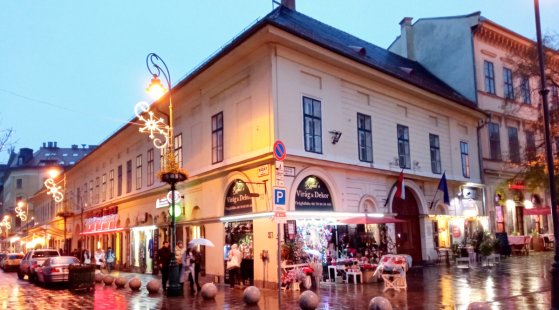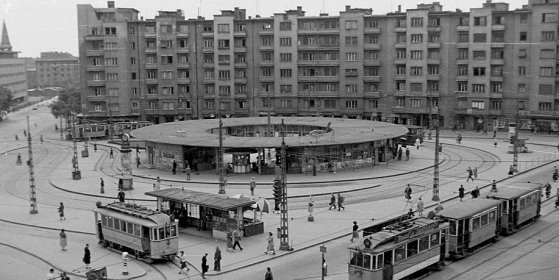 The „intertwined history” of the bridges and the city of Budapest
Which ideas and events have shaped the fate of bridges of Budapest and the cityscape? Alongside many other interesting facts, this question is also answered this newly published book by the Budapest City Archives, which introduces the history of bridges in Budapest.
The „intertwined history” of the bridges and the city of Budapest
Which ideas and events have shaped the fate of bridges of Budapest and the cityscape? Alongside many other interesting facts, this question is also answered this newly published book by the Budapest City Archives, which introduces the history of bridges in Budapest.
Architecture
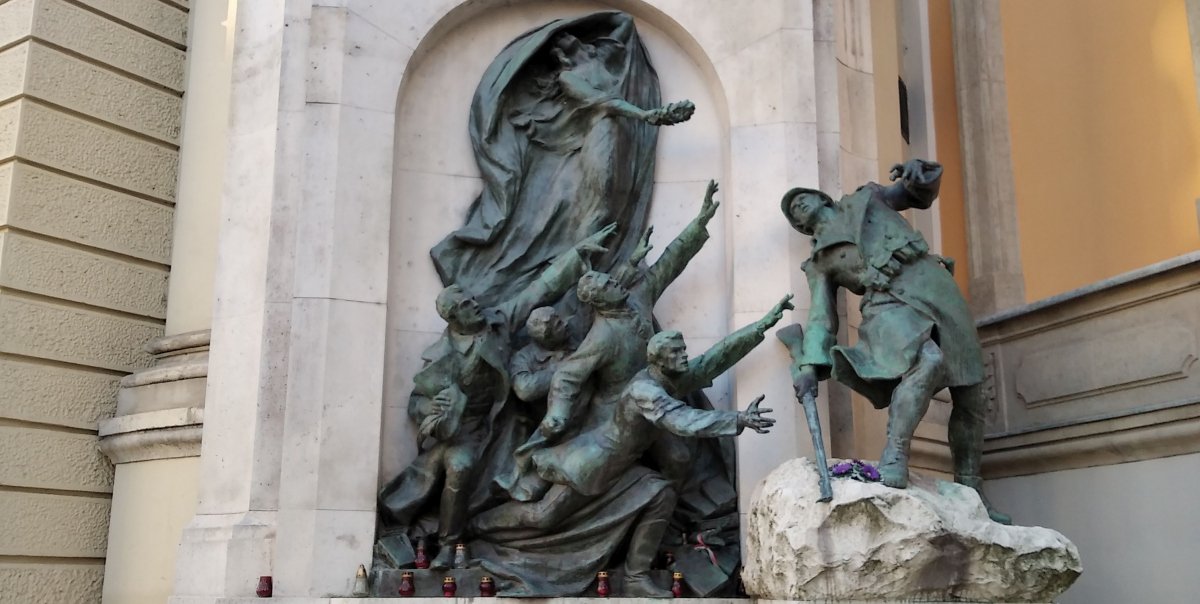 Drama on the university wall - The heroic monument was planned 95 years ago
Drama on the university wall - The heroic monument was planned 95 years ago
March 30, 2023 at 9:00 AM
In the constant hustle and bustle of the Egyetem Square in Pest, the students may not even notice the monument that decorates the short section of wall between the church and the central building of ELTE. However, it commemorates their predecessors, the heroes who fought for their country in World War I, and those who heroically helped them. The first design of the dramatically collapsing soldier was born in 1928, ninety-five years ago.
The story of a famous clothing factory in Józsefváros
March 27, 2023 at 11:00 AM
Close to Nagyvárad Square, at the junction of Elnök Street and Orczy Road, there is a complex of buildings with a huge floor area. There is an office building, a jewellery store, a tailor shop, a communications technology company, a photography and video recording company, and even a table tennis club. In the 1960s and 1970s, one of the largest clothing manufacturers in the country operated behind the walls, but the story did not begin then but at the end of the 19th century.
Luxury in the white cubes - 90-year-old modern villas in Buda
March 23, 2023 at 10:00 AM
The Buda side of the capital, with its wonderful landscapes and fresh air, is still very attractive today, and it was like this even in the first half of the last century. Many people from Pest, which became especially crowded after the Treaty of Trianon, moved to the other side of the Danube and from the beginning of the thirties, they built modern-style villas on the hillsides. Pestbuda now presents two of them below, into which their residents moved ninety years ago.
Stone coffin in front of the Parliament - The Monument of National Martyrs was unveiled 89 years ago
March 20, 2023 at 10:30 AM
Statues of many statesmen can be seen in front of the Parliament, which is why the Monument of National Martyrs, located next to Kossuth Square, on Vértanúk Square, receives relatively little attention. The dignified work even in its simplicity commemorates the victims of the proletarian power after World War I. After five years of preparation, it was unveiled on 18 March 1934, exactly eighty-nine years ago.
The first Hungarian female engineer was born 125 years ago - She wanted to build bridges, roads and railways
March 8, 2023 at 3:00 PM
Eszter Pécsi, the first Hungarian female engineer, received her statics degree at Royal Joseph Polytechnic University on her 22nd birthday, making her the first female graduate engineer in the country. She notes the plans for the statics of the Alfréd Hajós Swimming Pool, but after 1945 she also took part in the revision of the capital's damaged buildings, as well as in the reinforcement work of the cracked roof of the National Theatre. She was responsible for the construction of several villas in the capital, such as the recently renovated Rózsi Walter Villa, which was designed by her husband, József Fischer. In Pestbuda's article, we remember the first Hungarian female engineer.
The afterlife of a grain warehouse - The 140-year-old Elevator House on Boráros Square was a real sight
March 7, 2023 at 3:00 PM
From the 1870s, huge construction works were carried out in Budapest, which was developing into a metropolis. Of course, the Hungarian capital, as the country's economic, commercial and industrial centre not only grew at an ever-accelerating rate in terms of its residential and public buildings, but its industrial sites also multiplied, and their sizes occupied an ever-larger area. An important logistics centre was established close to the southern connecting railway bridge.
The pioneer of modern architecture - Virgil Borbíró was born 130 years ago
March 6, 2023 at 10:00 AM
In the first half of the 20th century, Hungarian architectural public life was punctuated by many debates: at first, the Hungarian design language was at the centre, then from the second half of the 1920s, modern architecture. Virgil Borbíró took on a fighting role in the latter and fought determinedly for the new trend to gain ground. The engineer, who was born exactly one hundred and thirty years ago, left his mark on Hungarian cultural history not only with his buildings but also with his writings and organisational work.
From eclecticism to brutalism: Budapest's protected buildings are presented
March 2, 2023 at 4:00 PM
The exhibition titled "From Eclecticism to Brutalism: Architectural Assets Excavated in Budapest between 2017-2022" opens today at the Metropolitan Ervin Szabó Library. Through the buildings that have been placed under local protection in the past five years, the exhibition presents the change of architectural styles found in the capital from the end of the 19th century to the beginning of the 1970s.
The small mirror of Art Deco - The lesser-known side of Frigyes Spiegel, who died 90 years ago
February 28, 2023 at 10:00 AM
Frigyes Spiegel wrote himself into the history of Hungarian architecture with his fantastic facades: his Art Nouveau buildings are the earliest appearances of the new style in the country. His genius naturally followed the changes of the times, and between the two world wars, he also left his mark on Art Deco - even if only to the extent of a single building. However, the historical circumstances also increase the value of this work of his, which also belongs to the elite in its category.
The story of the preservation of a factory building in Ferencváros
February 26, 2023 at 4:00 PM
The Laboratory Equipment Factory, completed in January 1963 at the corner of Tűzoltó Street and Thaly Kálmán Street, defined the streetscape of the neighbourhood for decades. Even when hundreds of workers worked in the building with a huge floor area, and even when it stood empty after 1990 and its condition deteriorated year by year. Nowadays, a modern dormitory, mainly inhabited by foreign university students, operates behind the walls, the new function also meant the rebirth of the building.
Where a movie star lived 100 years ago - Kálmán Rózsahegyi's villa
February 24, 2023 at 9:00 AM
Kálmán Rózsahegyi was one of the greatest actors of the first half of the last century, in addition to his stage presence, he also played in many cult films. For his fiftieth birthday, his fans wanted to surprise him with a family house, for which they started a fundraiser. The plans were drawn up by Jenő Lechner a hundred years ago, in 1923, and he created a sumptuous luxury villa with his brilliant idea and great sense of style. Three years later, the actor was able to occupy his new home after returning home from the United States of America.
Gemstone along the Devil's Trench - The idea of the emerald church was born 90 years ago
February 21, 2023 at 2:00 PM
A fantastic church is hidden among lavish villas, just a few hundred metres from the tram terminus in Hűvösvölgy. Its modern forms suggest that it was built in the 20th century, but visitors might not even imagine how long the work took - competing with medieval cathedrals, it was completed in several decades. However, the result was equally brilliant, the Gothic and modernism are perfectly combined in it. The idea of building the church in Remetekertváros was born ninety years ago, in 1933.
The father of the Lágymányos residential houses, architect József Fischer was born 150 years ago
February 14, 2023 at 12:30 PM
Architect József Fischer was one of the important creators of the large-scale residential house constructions that began at the beginning of the 20th century. His buildings still define the image of Lágymányos. If people walk from the direction of Szent Gellért Square on Bartók Béla Road towards Móricz Zsigmond Square, or walk over to Budafoki Road, from here they turn into Zenta Street, they can see several residential houses that he listed. He designed around 25 houses in the capital, most of which are still standing today. Pestbuda now commemorates József Fischer, who was born 150 years ago.
There was once a theatre in the Class Lottery Palace - The history of the theatre began 105 years ago on Eskü Square
February 12, 2023 at 9:00 AM
Where cars turn down today from the Erzsébet Bridge to the Pest embankment, before World War II, there stood a huge and beautiful building: the Class Lottery Palace. It was built at the turn of the century in the Neo-Baroque style, but Art Nouveau also left its mark on it. However, its interior was remodelled several times, most significantly for Vilma Medgyaszay's theatre. Jenő Lechner made its classicist plans in February 1918, exactly 105 years ago.
Architect Ernő Schannen was a master of residential houses - He mastered design in the office of Ybl and Hauszmann
February 5, 2023 at 1:00 PM
Ernő Schannen is a little-known member of the architectural community at the turn of the century. However, his work significantly contributed to the development of Budapest's cityscape, he developed a unique style, in Pest and Buda we can find residential houses designed by him in many places, but he also created a hospital and a bank building, and also castles in the countryside.
Ernő Foerk, who built a church in a slum, was born 155 years ago
February 3, 2023 at 9:00 AM
Ernő Foerk is not one of Hungary's famous architects, but almost everyone knows his main work, the Votive Church of Szeged. A building very similar to it can also be found in Budapest, namely in Tripolisz of the 13th District, which was one of the capital's scariest neighbourhoods. The St. Michael's Parish Church, consecrated in 1930, brought light to the part of town with a dubious reputation.
The first Hungarian Olympic champion became a famous architect - Alfréd Hajós was born 145 years ago
February 1, 2023 at 11:00 AM
Hungary is considered a great power in water sports, which was already foreshadowed by the glory of our first Olympic champion: Alfréd Hajós won Hungary's first gold in swimming. At the Athens competition, he was only eighteen years old, so he had to choose a career after his victory, and the swimmer nicknamed the Hungarian Dolphin became an architect. In the first half of the 20th century, Alfréd Hajós, who was born 145 years ago, achieved good results in this field as well, his works were of the high standard of the era.
Witnesses of an exciting era - A mix of styles on the turn of the century villas
January 27, 2023 at 9:00 AM
The term turn of the century usually refers to the end of the 1800s and the beginning of the 1900s, the last two decades of happy times of peace. This period brought amazing diversity to the field of architecture, which appeared not only in large-scale public buildings but also in smaller residential buildings and villas. An excellent example of this is provided by some early villas of a little-known architect, Jenő Lechner, several of which were taken over by their new owners in 1908, i.e., one hundred and fifteen years ago.
Gone are the boards that once meant the world - Béla Lajta and the first National Theatre
January 23, 2023 at 10:00 AM
Béla Lajta was one of the most brilliant figures in the history of Hungarian architecture, who fortunately was properly appreciated even in his own time, and posterity cherishes his memory with respect. A long series of studies and several books have already been published about his life and work, and three years ago Pestbuda also commemorated the 100th anniversary of his death. Today Hungarians celebrate the anniversary of his birth as he was born 150 years ago. On this occasion, Pestbuda now presents a topic close to his heart, his designs for the former National Theatre.
Who became a fan of Art Nouveau: the architectural legacy of Artúr Sebestyén, born 155 years ago
January 18, 2023 at 4:00 PM
Artúr Sebestyén, born 155 years ago today, was one of the important architects of the turn of the century. After graduating from the University of Technology, he worked in Alajos Hauszmann's office, his architectural work was initially defined by Neo-Baroque forms, then he increasingly turned his attention to Hungarian motifs. He designed many buildings in the capital, in the countryside and beyond the borders. His best-known work is the unmissable Art Nouveau creation, the Gellért Hotel and Thermal Bath.
The lover of historical styles - Gáspár Fábián passed away 70 years ago
January 13, 2023 at 9:00 AM
The second half of the 19th century was the great era of the revival of historical styles, which is called historicism in technical terms. Although the different tendencies of Art Nouveau ended its dominance around the turn of the century, it remained on the stage and even experienced a second boom from the beginning of the 1920s. One of the most prolific architects of this period was Gáspár Fábián, who died 70 years ago.
A special place in Ferencváros - the Unitarian Mission House opened 100 years ago in Hőgyes Endre Street
January 12, 2023 at 1:17 PM
A small street opens onto Üllői Road, which bears the name of medical professor Endre Hőgyes, the founder of the Pasteur Institute in Budapest. Not by chance, as this institute once operated here. There is another interesting building on the street, which is known to those belonging to the Unitarian religious denomination, but the majority of the townspeople may not have heard of it. The house is really special, as it is both a residential building and a church.
Hidden in the Strong Room - This is how the Holy Crown was kept in Buda Castle
January 9, 2023 at 1:30 PM
Today, it is taken for granted that anyone can view the Holy Crown of Hungary. But for centuries it was stored in a closed chest with iron straps, protected by keys and seals, and could only be taken out on special holidays, such as the coronation in 1867, the millennium celebration in 1896 or the Eucharistic Congress in 1938. On the occasion of the return of the fearfully guarded national treasure 45 years ago, Pestbuda presents the conditions under which the crown was guarded in Buda Castle.
The headquarters of the Hungarian Central Statistical Office is 125 years old
January 3, 2023 at 3:30 PM
The Hungarian Royal Central Statistical Office was established in 1871. For a long time, the institution did not have an independent home and was constantly forced to move. The turning point occurred in 1896 when a legal article was published on the construction of the independent building. The plans were prepared by the renowned architect and university professor Győző Czigler. The handover of the new headquarters took place on 18 December 1897, but the staff of the office only took possession of the building in January 1898.
This is how Budapest developed in 2022 - Several public buildings were handed over this year
December 31, 2022 at 11:00 AM
2022 will almost certainly go down in history with a negative tone, as it was burdened by a series of crises from which Hungary could not extricate itself. Nevertheless, Budapest developed very nicely, many investments were completed this year: several new buildings were completed and many monuments were restored. On the last day of the year, Pestbuda looks back and summarises the events of the year.
A little Transylvania on the edge of Budapest - Lutheran churches of Rákosmente
December 24, 2022 at 3:00 PM
The tiny Rákos Stream flowing through the edge of Pest gave its name to a series of quarters in the 16th and 17th Districts, including Rákosliget, Rákoskeresztúr, Rákosszentmihály, Rákoscsaba and Rákoshegy. There is also a great similarity in their built environment, they show a rural, small-town image. Moreover, they also share a high degree of similarity between their evangelical churches: they are reminiscent of Transylvanian fortified churches.
Merger of Buda, Pest, Óbuda and Margit Island: 150 years ago the city unification law was announced
December 22, 2022 at 12:30 PM
Budapest is one of the most beautifully situated capitals in the world, something Hungarians can be really proud of. It is always nice when a foreigner marvels spectacularly, for example, at the panorama from the Castle. But Hungarians owe these ecstatic expressions not only to the gift of nature but also to the built environment created by our ancestors. Buda and Pest have lived in each other's neighbourhood for centuries, yet their unification provided the impetus that later resulted in so many fantastic buildings on both banks of the Danube. At the end of 1872, after a long history, the parliament passed a law on the merger of the cities, which was approved by the monarch on 22 December 1872 and was announced the next day.
Scandalous background, sensational ending - The Lukács Villa on Ostrom Street is 100 years old
December 16, 2022 at 8:30 AM
The steep Ostrom Street, which opens into the Bécsi Kapu Square, is home to several valuable buildings, which are worthy of the prominent location with their sophisticated appearance. However, the history of the creation of the former Lukács Villa at number 5 is riddled with scandals, but this can also be attributed to the turbulent era. The walls of the villa, which was completed 100 years ago, hide this flaw, and to today's observer, they only tell about the designer's genius.
The oldest building in Ferencváros stands on Kálvin Square - The story of the former Két Oroszlán Inn
December 13, 2022 at 11:00 AM
The house at 9 Kálvin Square is the oldest building not only on the square but also in the capital's 9th District that is still standing today. In the past two centuries, it has been through many things, it has been used for many things, but the most important thing is that it was used and this not very large, but cultural-historically significant building of Pest classicist architecture has survived.
An emblematic building, the Mushroom at Móricz Zsigmond Square is 80 years old
December 8, 2022 at 12:30 PM
Újbuda's emblematic building, the Mushroom [Gomba], is eighty years old this December. The traffic pavilion erected in 1942 at Móricz Zsigmond Square performed its original function for sixty years until the tracks running around it were demolished. The building remained unoccupied. By the time it came under the ownership of the 11th District Local Council from the capital, it was dilapidated, dirty, and unworthy of its architectural value and the atomic sphere of the place. A design competition was launched to save it, as a result of which the contemporary public space was born in 2014, which satisfies both elegant, functional and cultural needs.
More articles
 The „intertwined history” of the bridges and the city of Budapest
Which ideas and events have shaped the fate of bridges of Budapest and the cityscape? Alongside many other interesting facts, this question is also answered this newly published book by the Budapest City Archives, which introduces the history of bridges in Budapest.
The „intertwined history” of the bridges and the city of Budapest
Which ideas and events have shaped the fate of bridges of Budapest and the cityscape? Alongside many other interesting facts, this question is also answered this newly published book by the Budapest City Archives, which introduces the history of bridges in Budapest.
 The Bridge Report, which brought a turning point in the history of Budapest
A travel report that changed the history of Pest and Buda, as well as Hungary. The little book contributed to the change of half a thousand years of legal customs and the implementation of an investment of unprecedented size and technical quality. This book was The Bridge Report [Hídjelentés in Hungarian].
The Bridge Report, which brought a turning point in the history of Budapest
A travel report that changed the history of Pest and Buda, as well as Hungary. The little book contributed to the change of half a thousand years of legal customs and the implementation of an investment of unprecedented size and technical quality. This book was The Bridge Report [Hídjelentés in Hungarian].
 A message from the former school: An exhibition in memory of János Neumann was opened at the Fasori Secondary School
An exhibition was opened in János Neumann's former school, the Fasori Lutheran Secondary School, on the occasion of the 120th anniversary of the world-famous mathematician's birth. In the exhibition presenting the former Neumann milieu, paintings, graphics, photos, furniture, and objects tell the story of the art-supporting spirit of the noble bourgeois family at the turn of the century.
A message from the former school: An exhibition in memory of János Neumann was opened at the Fasori Secondary School
An exhibition was opened in János Neumann's former school, the Fasori Lutheran Secondary School, on the occasion of the 120th anniversary of the world-famous mathematician's birth. In the exhibition presenting the former Neumann milieu, paintings, graphics, photos, furniture, and objects tell the story of the art-supporting spirit of the noble bourgeois family at the turn of the century.

